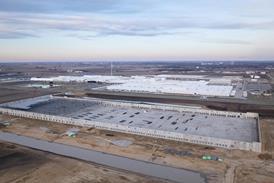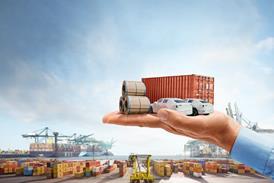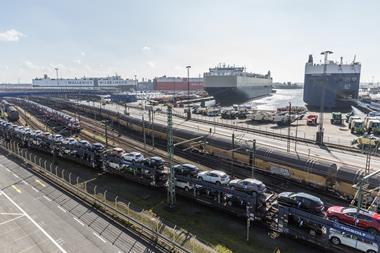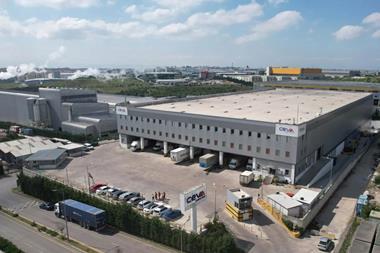Soaring logistics costs have pushed Russia’s leading carmakers, Avtovaz and UAZ, to jack up the sales price of their vehicles.

On November 1, UAZ added 50,000 roubles ($600) to the price of its products, owing to “a sharp and uncontrolled” hike in logistics tariffs in Russia in the second half of 2023, the company reported. The increase is to compensate for the increased cost of delivering vehicles from the plant to the dealerships. Customers prepared to pick up their ordered vehicle at the company’s automotive plant in Ulyanovsk will be exempted from the extra fee.
The Russian press recently cited sources close to UAZ that said the unprecedented rise in logistics tariffs stem from a lack of automotive carriers and drivers. Between July and October 2023, the cost of delivering a finished vehicle from the assembly plant to a city in the European part of Russia jumped by 50,000 roubles to 100,000 roubles ($1,200), one of the sources estimated.
To some extent, the difficulties are associated with a recovery of finished vehicle imports to Russia thanks to the parallel import schemes.
AvtoVaz, the Russian leading automotive company, calculated that the cost of finished vehicle logistics nearly tripled in 2023. The company started experiencing difficulties in August, but is currently managing to “move all manufactured finished vehicles.”
UAZ and AvtoVaz have jointly appealed to the Russian Industry and Trade Ministry to supply automotive carriers and take the transport companies’ pricing policies under control. So far, the government has refrained from any actions, one of the sources close to UAZ admitted.
The Russian Industry and Trade Ministry said it was working with industry on various schemes for optimising vehicle deliveries. One of the measures under consideration is to manufacture car carriers in Russia.
Automotive carriers in short supply
Chinese OEMs operating in Russia have also experienced difficulties with moving finished vehicles the since the middle of 2022. Russian newspaper Vedomosti reported that this happened because the finished vehicle market bounced back after last year’s slump but the Russian fleet of automotive carriers shrank as some companies curtailed operations.
Moscow-based consultancy Avtostat estimated that during the first three quarters of 2023, nearly 717,000 new vehicles were sold in Russia, almost 50% higher than the same period in the previous year. The market is gradually recovering. In September 2023, sales reached 110,000 units, almost 150% up compared with 2022.
However, the Russian logistics industry has only a third of the fleet of automotive carriers it operated in 2021, according to Sergey Turovsky, director of the Russian finished vehicle logistics provider, Yatis. If sales reach 1m vehicles per year, Russia will need to double its fleet of automotive carriers to ensure the logistics industry’s uninterrupted operations, he estimated.
Sergey Burgazliev, an independent automotive market consultant, said that over the last few years Russia has sold a large share of its fleet of automotive carriers to neighbouring countries. It now needs 300 to 500 automotive carriers to fill the gap, but sanctions by the West have narrowed the list of potential suppliers.
Driver exodus
A lack of qualified drivers is believed to be an even more pressing issue than a shortage of automotive carriers. In August 2023, the Russian transport sector faced a shortage of nearly 60,000 drivers, according to Vadim Filatov, director of the Russian logistics company PEK.
The Russian logistics industry’s predicament is primarily associated with a lack of drivers, agreed Vyacheslav Zhigalov, vice-president of the Russian Automotive Dealers Association. Logistics companies tend to put extra costs on their clients, pushing prices in the Russian finished vehicle logistics market upwards.
The Russian economy as a whole is wrestling with a persistent labour shortage. The Russian Central Bank warned about a growing labour shortage in Russia in December 2022, attributing this to, among other reasons, the conscription of 300,000 civilians during the Defense Ministry’s mobilisation campaign for fighters in Ukraine last year.
Large-scale immigration also took its toll. Forbes magazine cited sources inside Russia that said between 600,000 and 1,000,000 people left the country in 2022.
Mikhail Burmistrov, general director of the Russian think tank Infoline-Analitics, told Vedomosti that many drivers signed a contract with the Defense Ministry to join the Russian armed forces in Ukraine. He called the lack of drivers one of the most painful issues for the Russian finished vehicle logistics industry, adding that the situation where cargo cannot be delivered because there is no one to drive a truck has become common.










































No comments yet